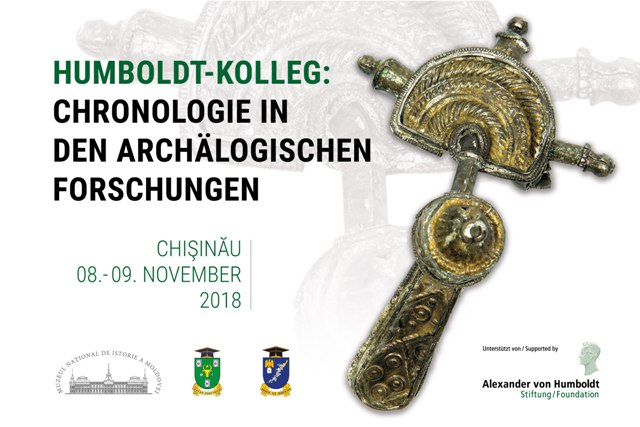  Events Archive Events Archive
International Scientific Conference „The Chronology of the Pre-Roman Iron Age and early Roman Age in Central and South-East Europe: Problems and Perspectives”
Chişinău, 8-9 November 2018
The National Museum of History of Moldova in collaboration with the Moldova State University and the Ion Creangă State Pedagogical University with the support of the Alexander von Humboldt Foundation organized the international scientific conference The Chronology of the Pre-Roman Iron Age and early Roman Age in Central and South-East Europe: Problems and Perspectives¶. The event was held from 8 to 9 November 2018 at the National Museum of History of Moldova and the Moldova State University.The conference was attended by Alexander von Humboldt Foundation scholars, as well as other researchers from Germany, Poland, Romania, Ukraine, Russia, Republic of Moldova, and other countries. The topic selected for discussion approached one of the many, but very important facets of the history of European Barbaricum in the maturation and flourishing period of Greek-Roman civilization. Remained outside the parameters that define classical antiquity, a large part of the European continent, although it has been, in one way or another, in the orbit of the impulses that came from the world of Greek-Roman civilization, nevertheless had its own development paths. Against the background of complicated processes from the La Tène period and the early Roman Age, determined by multiple human mobility within this world and by important intercalations of Barbaricum with the Greco-Roman world, it has experienced the cultural interference which perception is in strict dependence on the exact determination of chronological references. It is not accidental that this question was given central attention throughout the entire study period of the subject. Beyond the enormous efforts that have been made over the centuries, resulted in important findings, there are many other problems that are just waiting for solutions that archaeologists are looking at with much optimism. In this sense, the optimism of researchers comes to be justified by both the diversification of the methods applied in cutting-edge science (based upon the effervescent evolution of technologies) and by the interdisciplinary character of modern studies. An update and a systematization of the results achieved over recent years, connected to the previous ones, are likely to provide a radiograph of the quality of the situation in the field, defining the momentary problems, but also designing forward-looking solutions. In this way, the planned conference at Humboldt-Kolleg represented an excellent opportunity for a new round of discussions dedicated to studying Barbaricum archaeology in the La Tène Period and the Early Imperial Roman Period. For more information: https://www.nationalmuseum.md/en/humboldt_kolleg/
|

















































